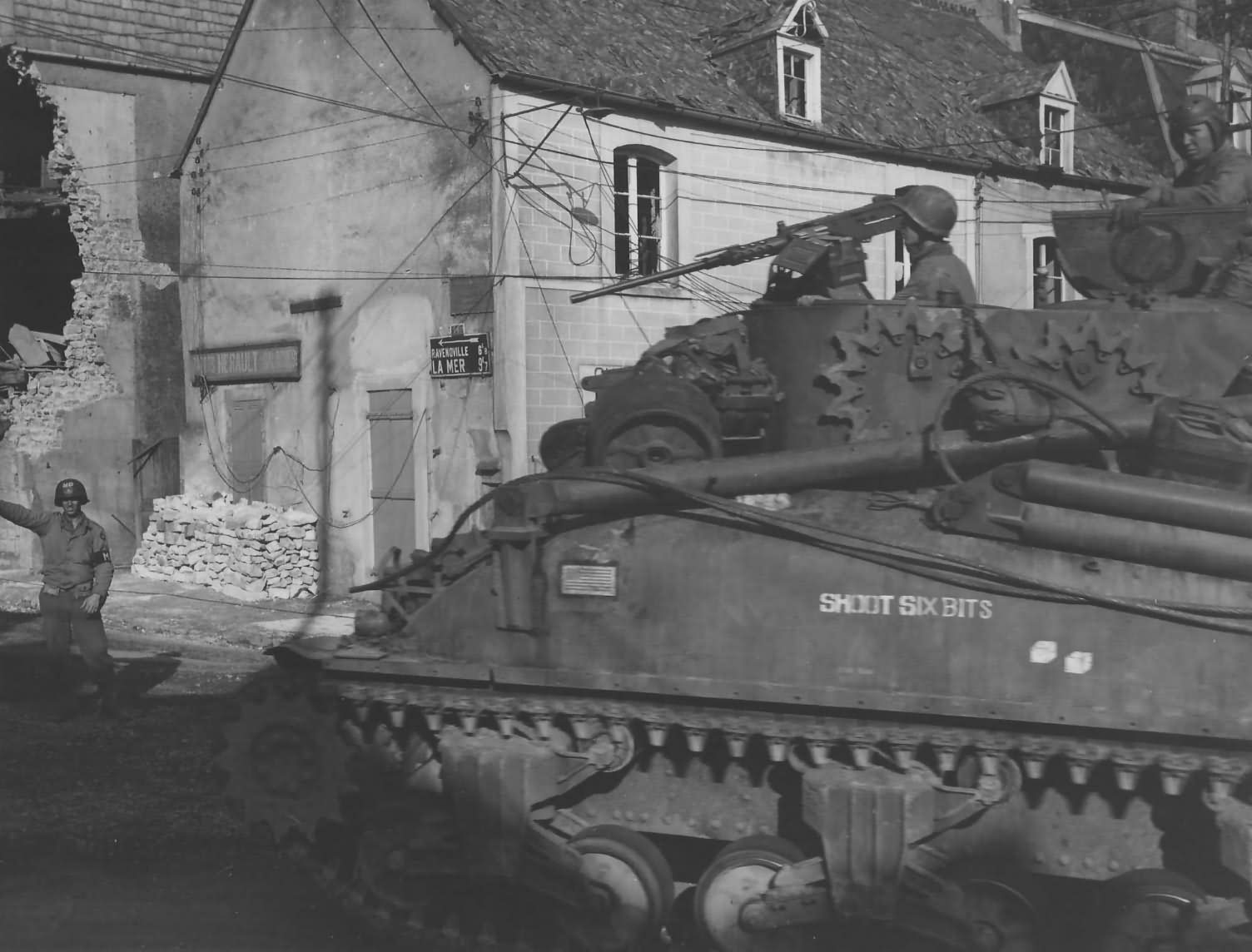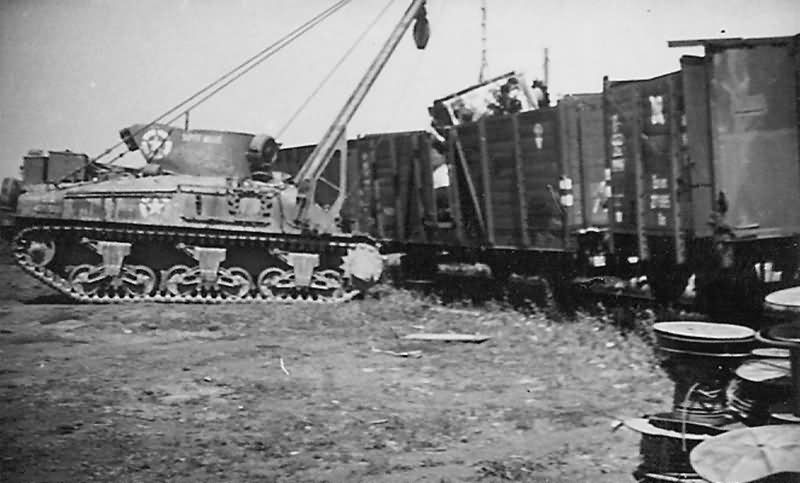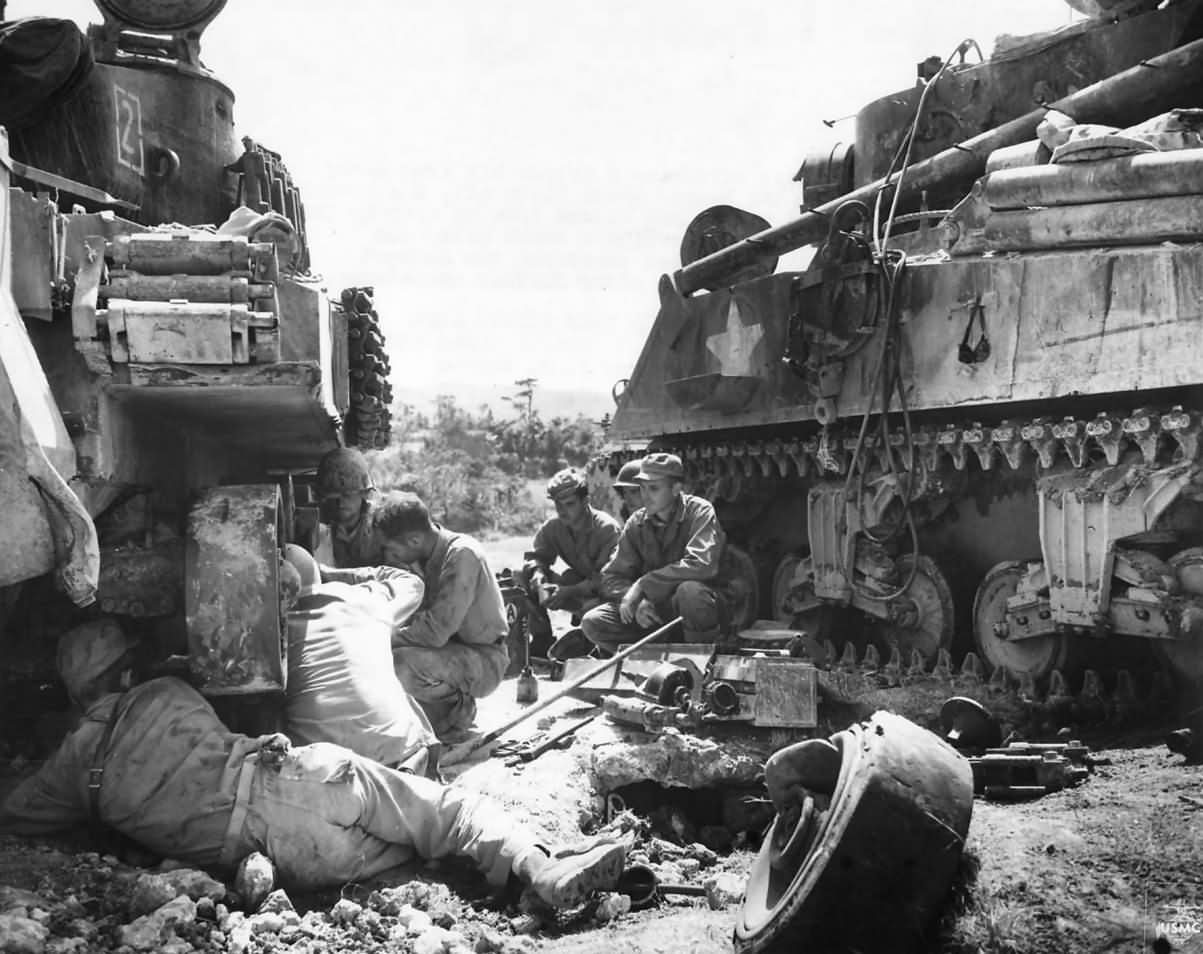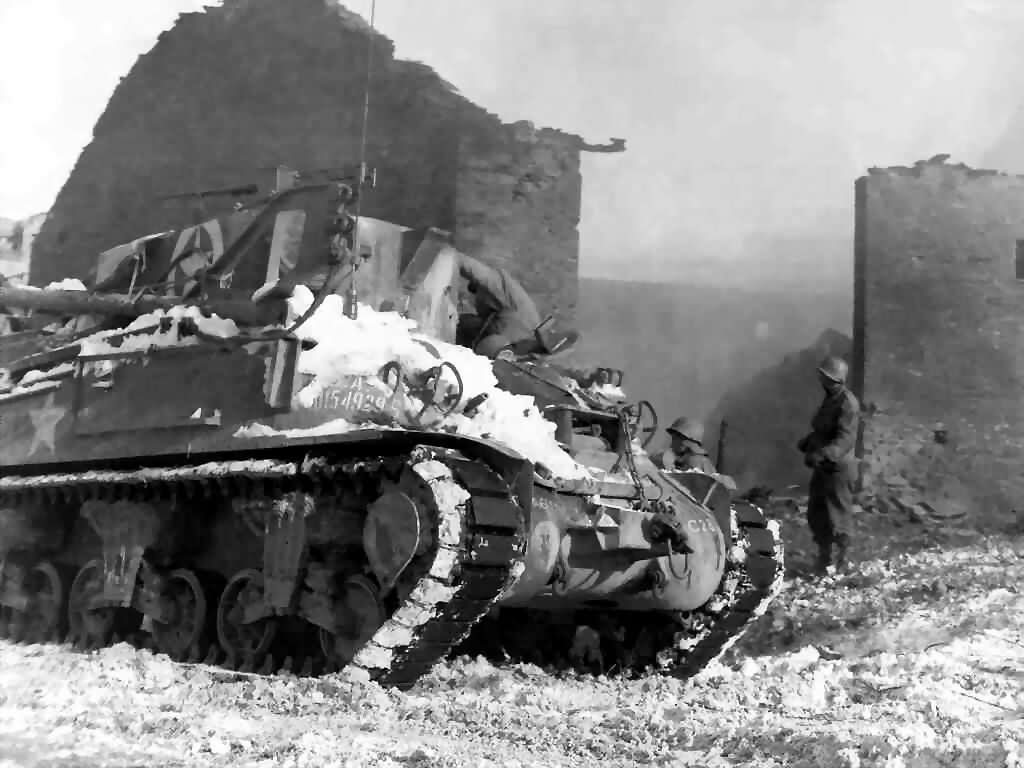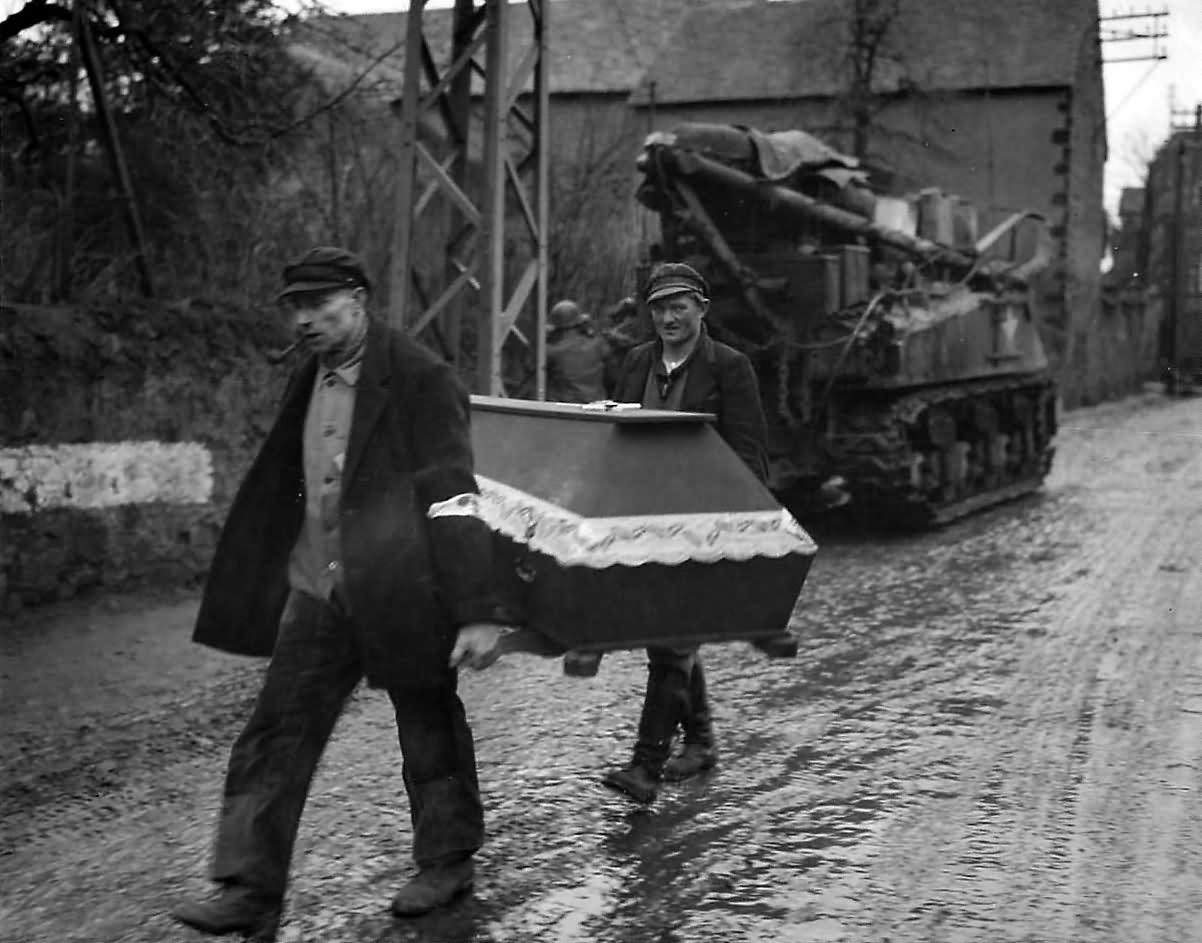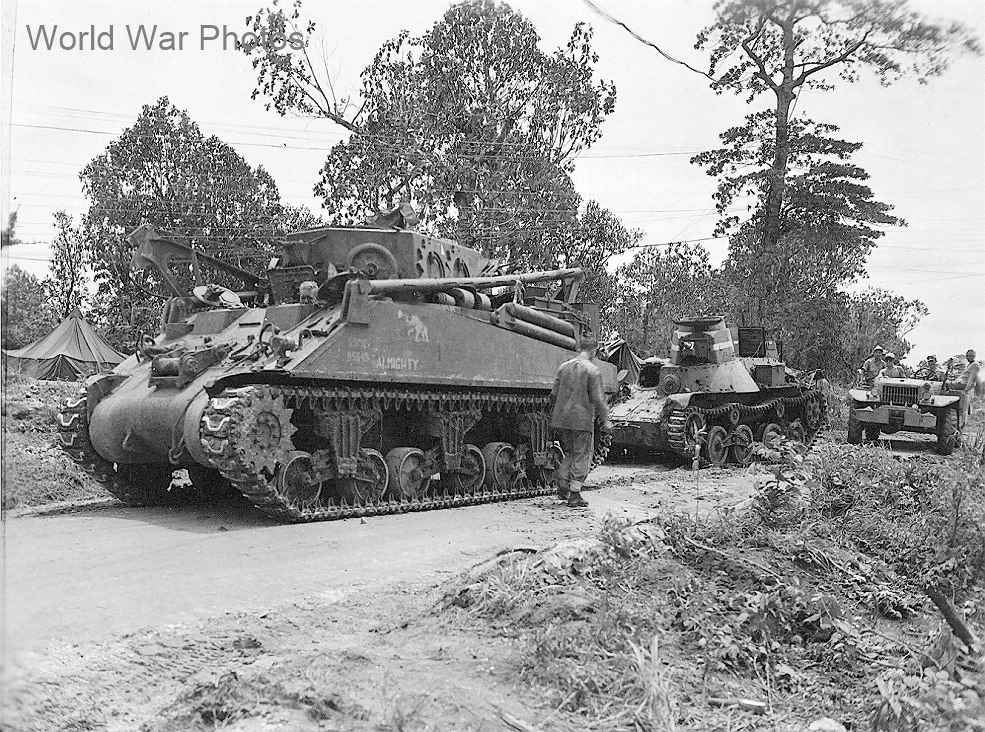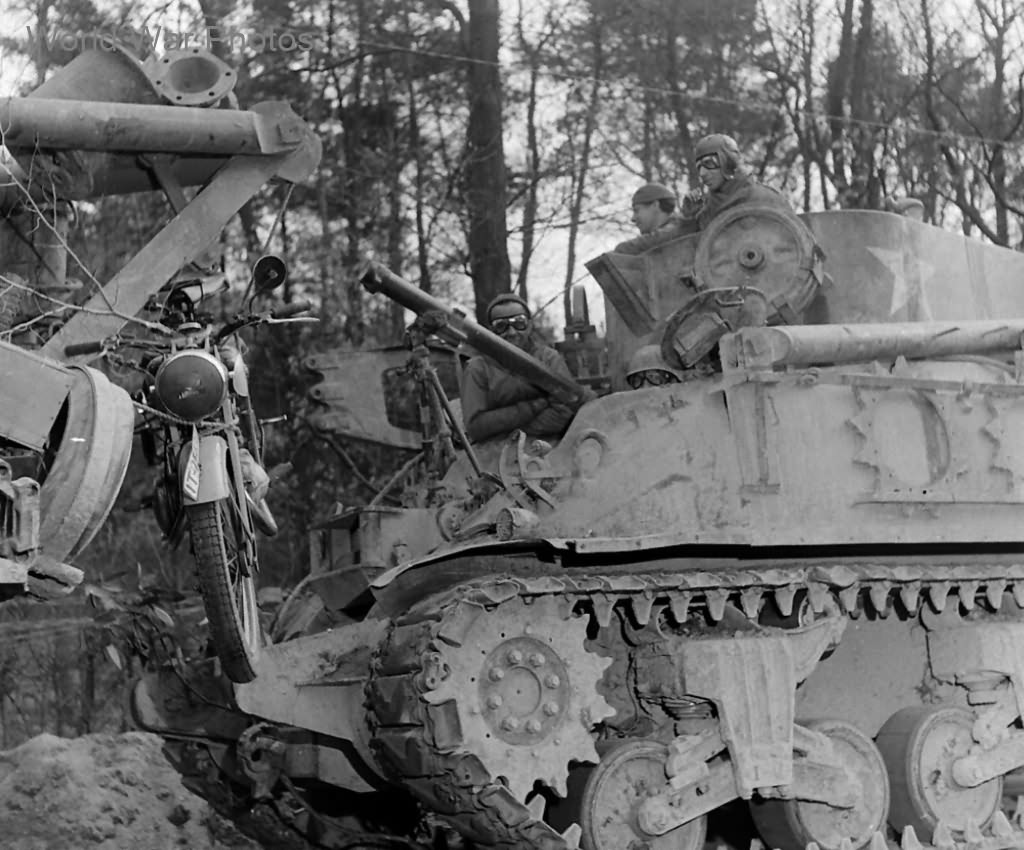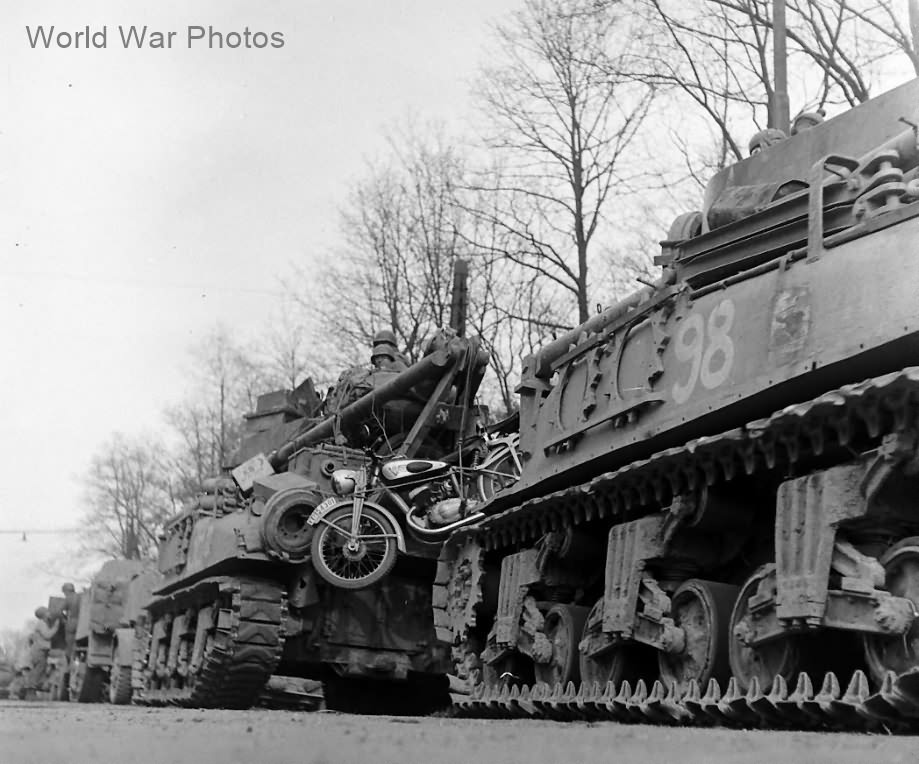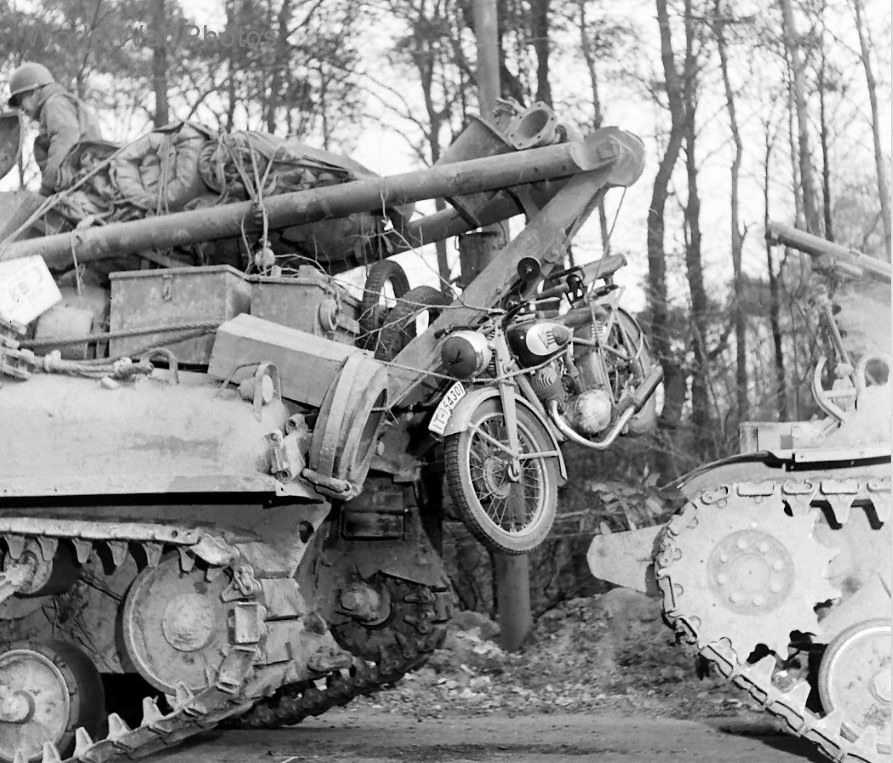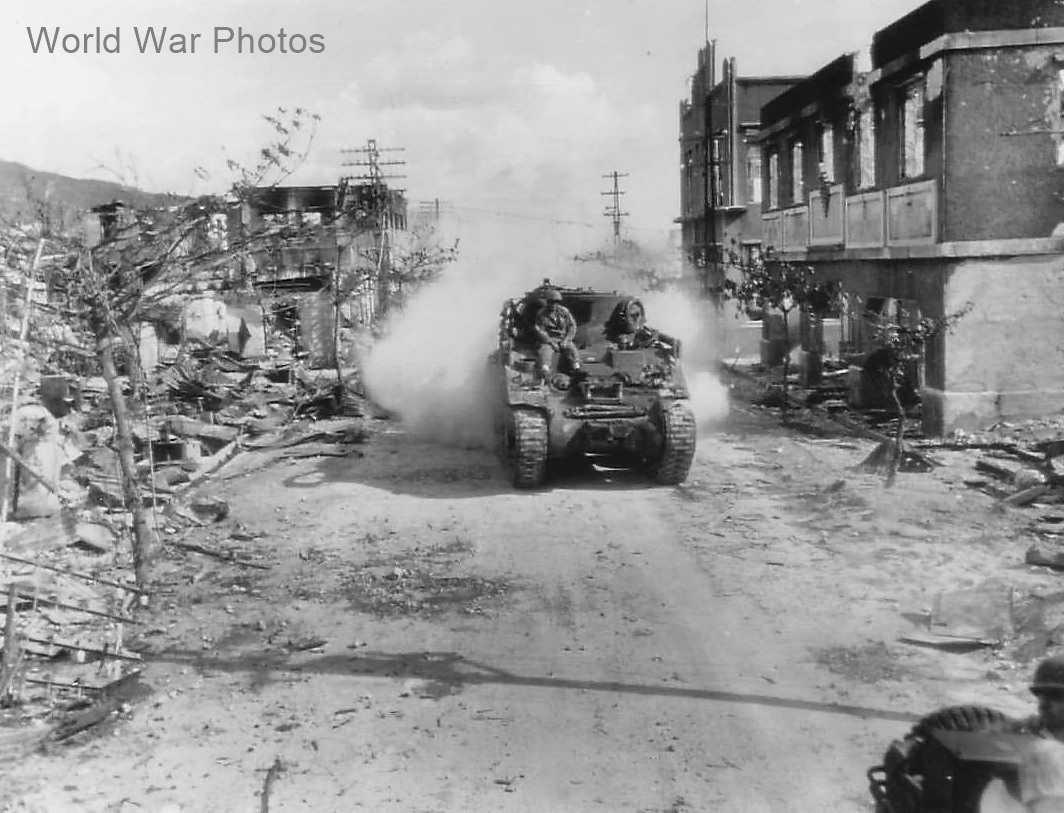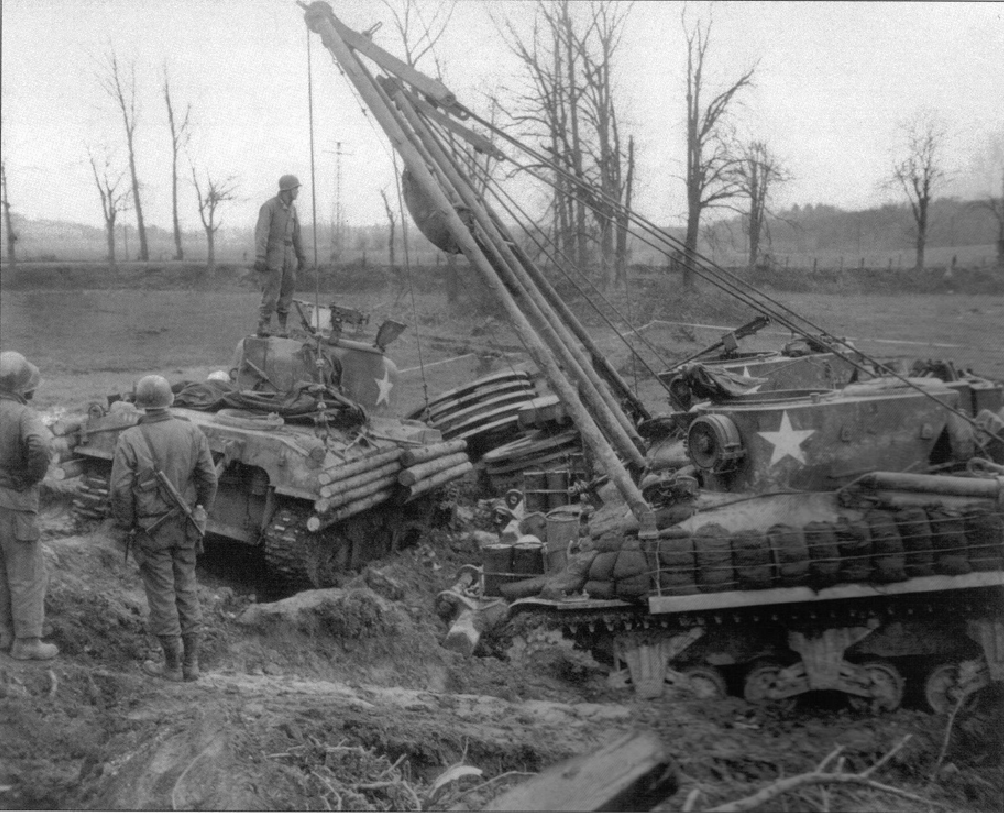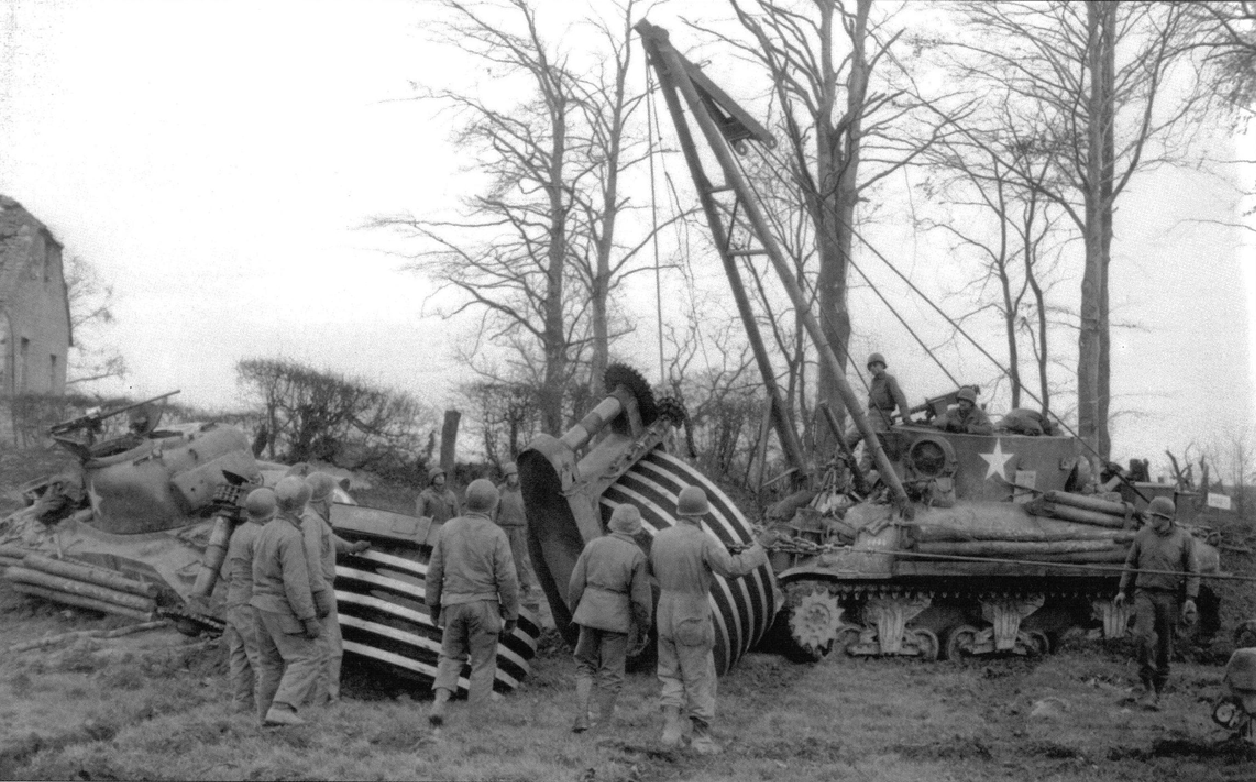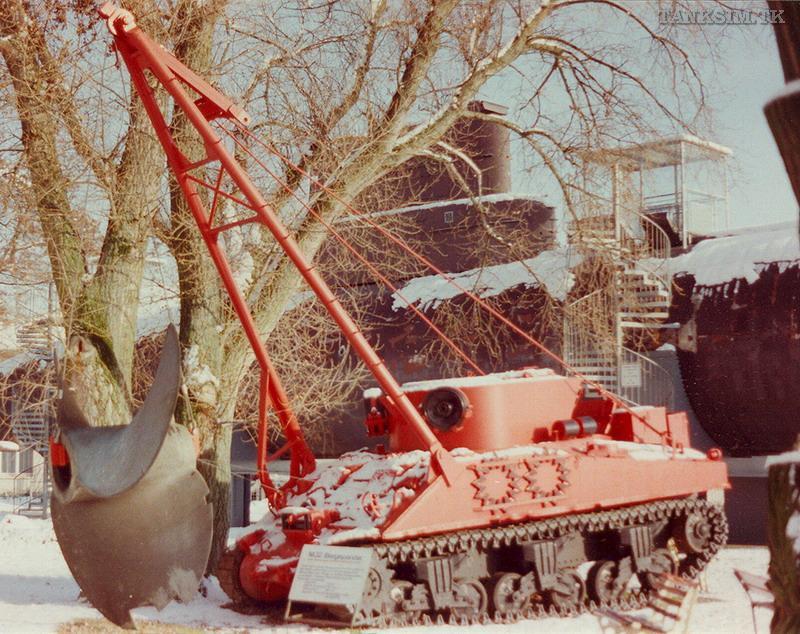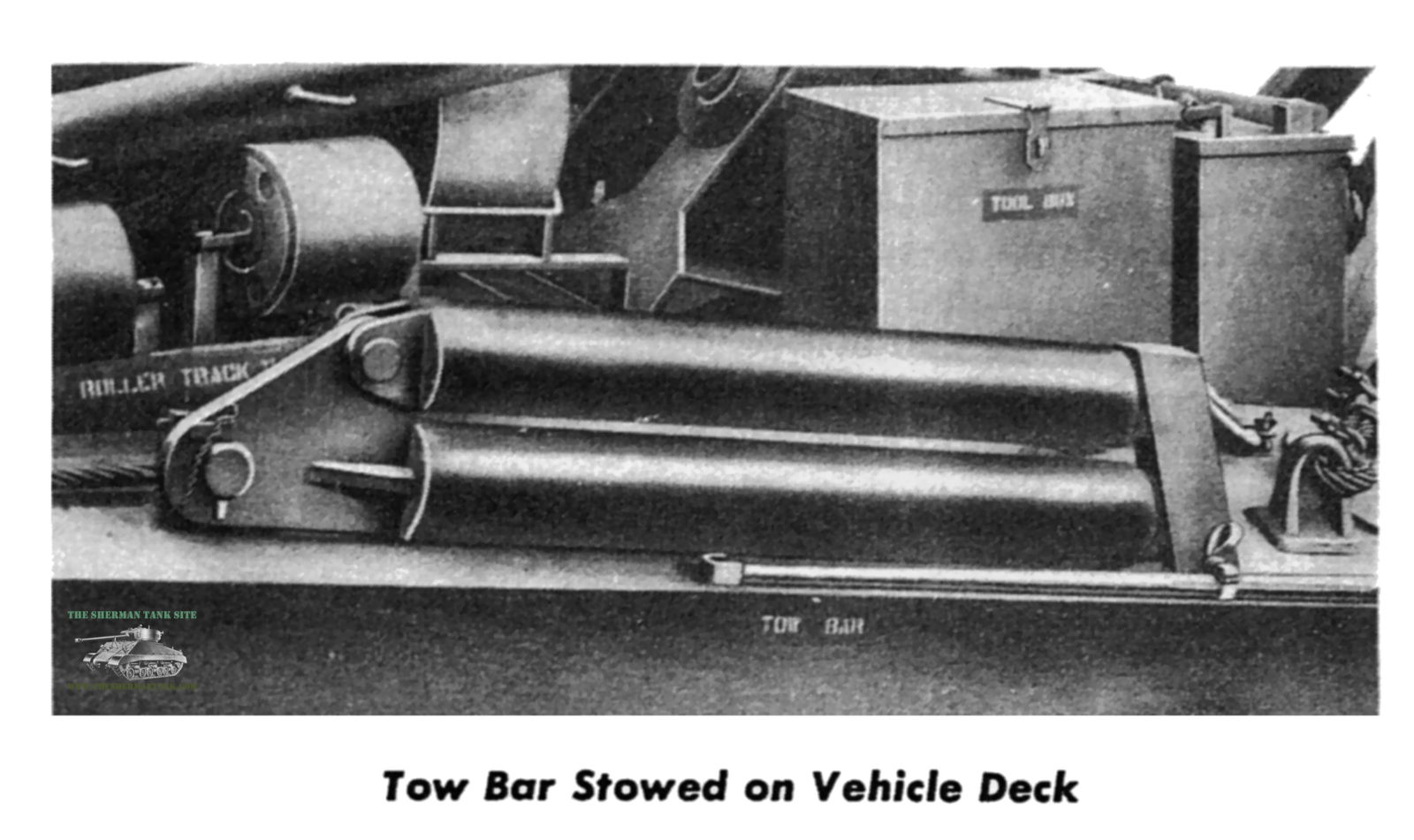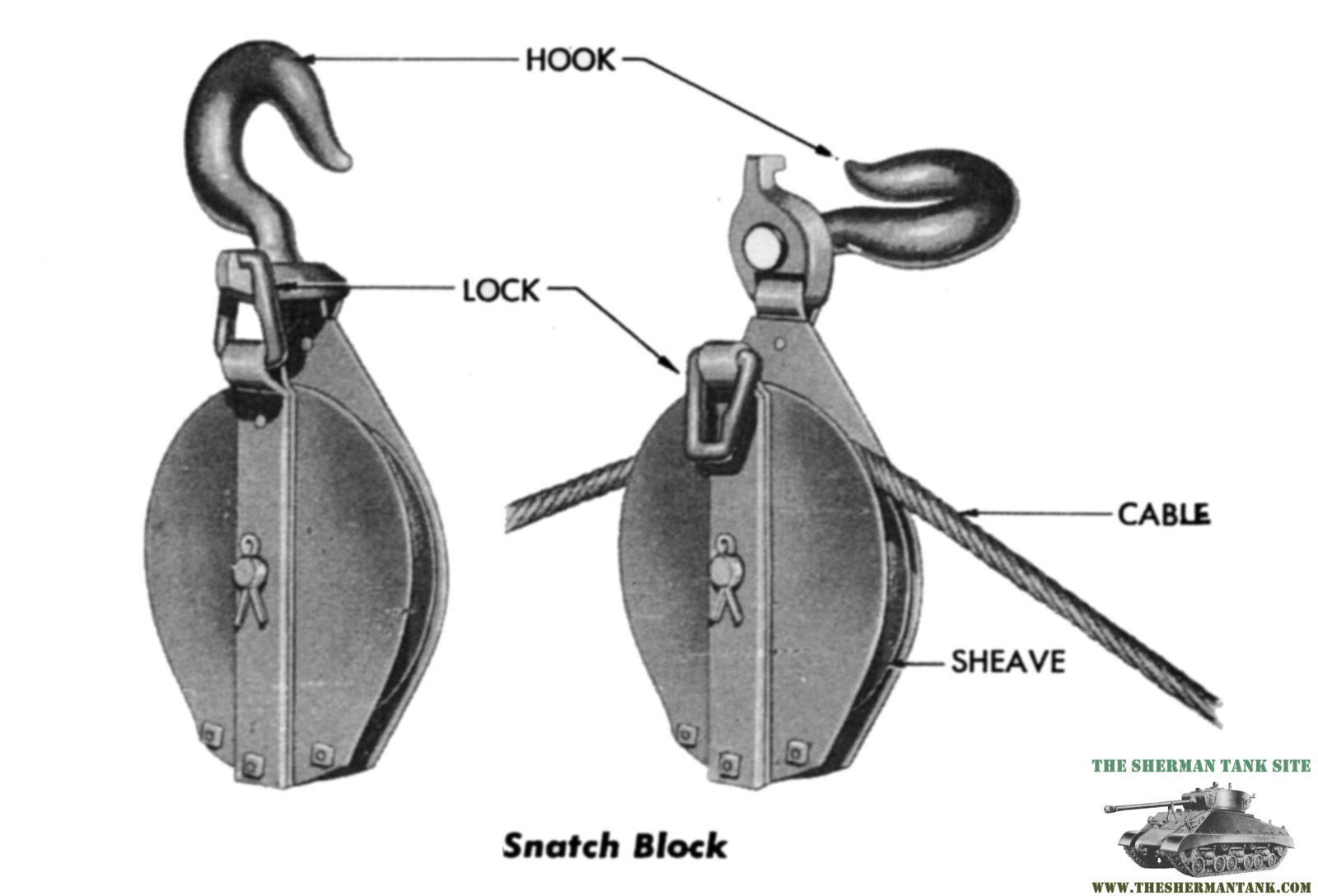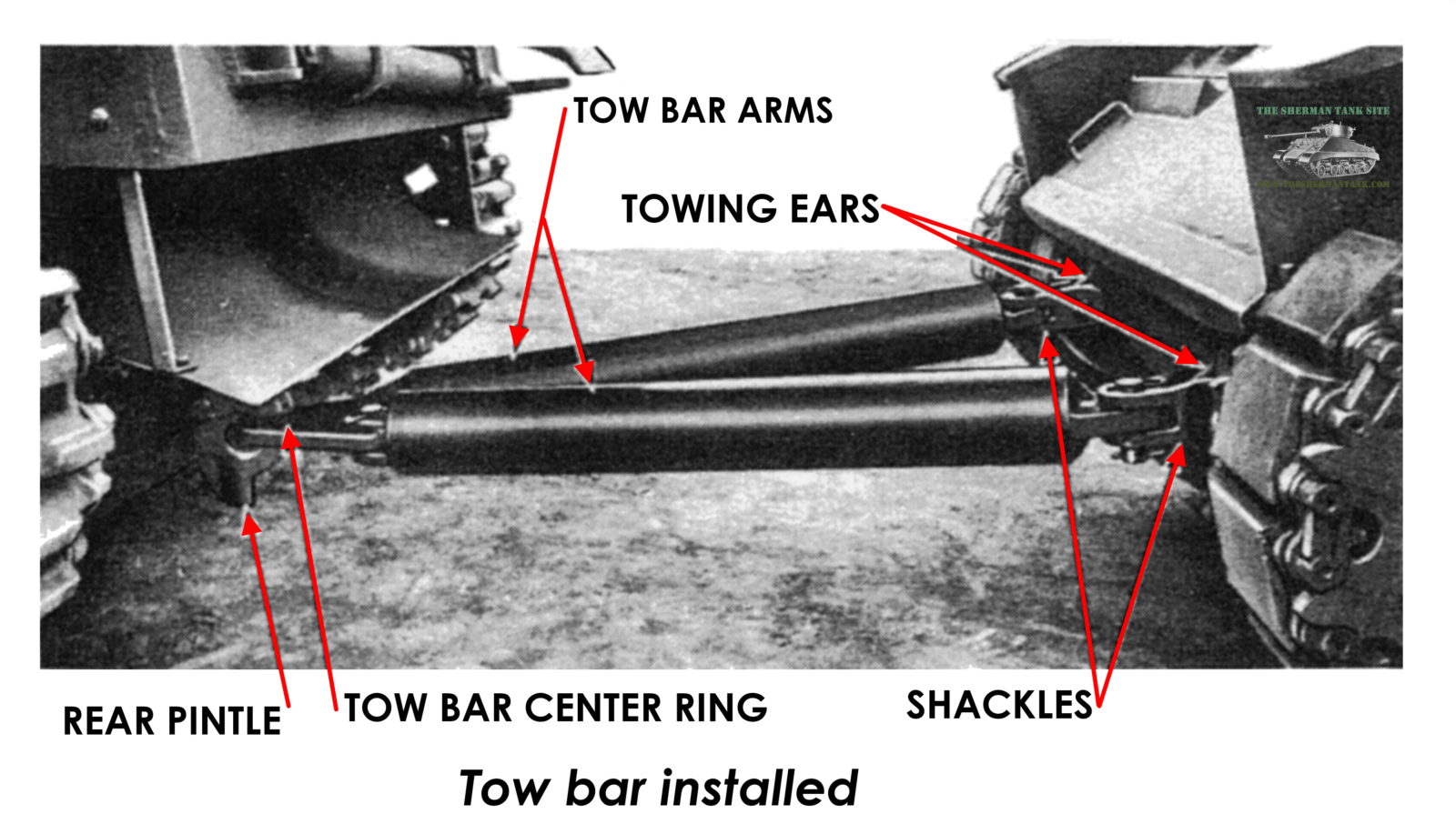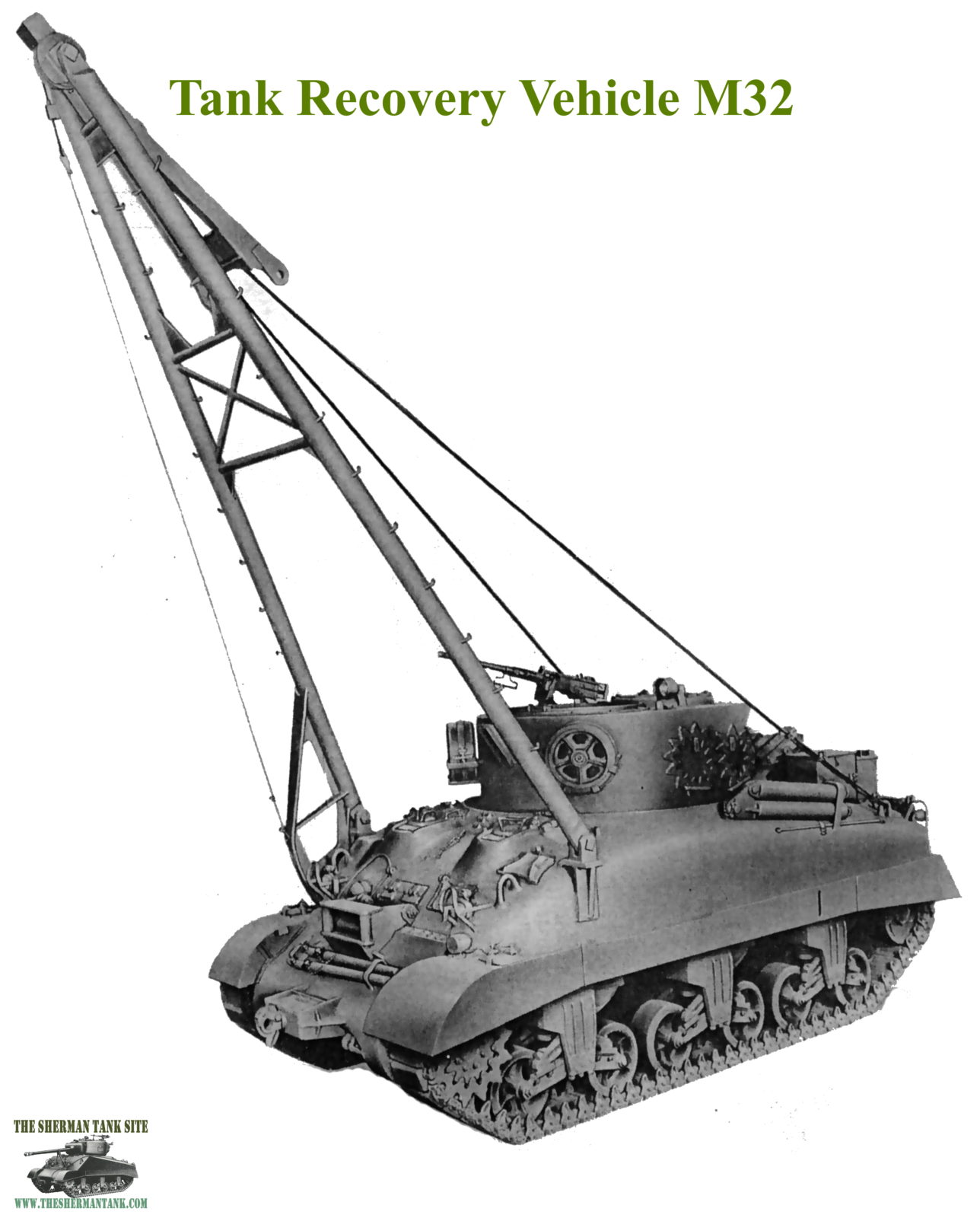
The Tank Recovery Vehicle M32 was an important part of any US Medium Tank unit. Tanks, like any vehicle, need a tow truck to get them unstuck or recovered from places another tank cant pull them out from. Like a ravine, or from under a collapsed bridge, deep in the mud. The M32 was not just an Armored tow truck, it was also an armored repair vehicle as well, and was packed with tools and spare parts.
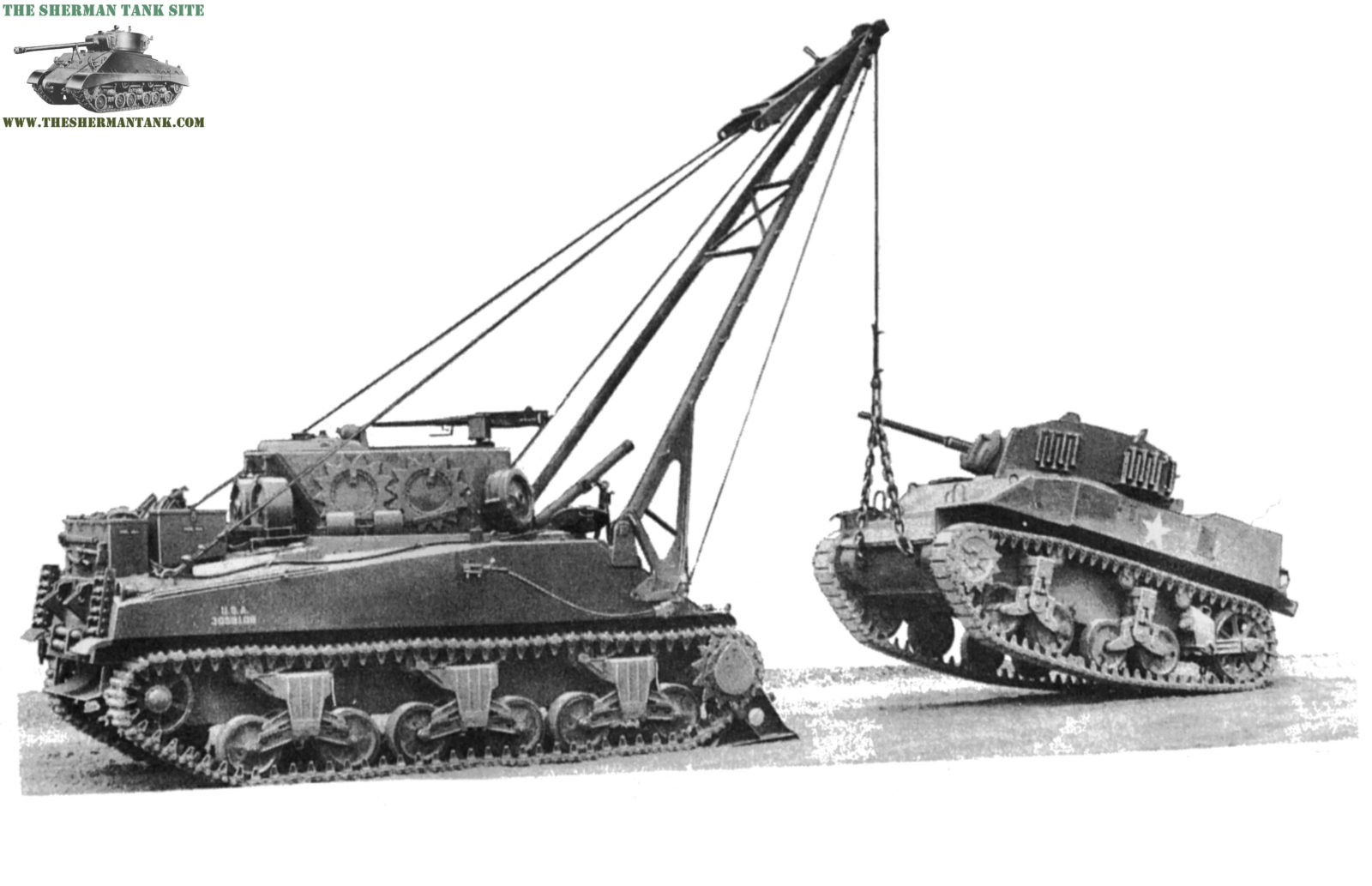
The M32 was the second Tank Recovery Vehicle, the US Army used, the first the M31 was based on the M3 Lee. The M31s were used until they wore out and were well-liked, and the M32 used all the lessons learned on the M31 to turn out a remarkable vehicle.
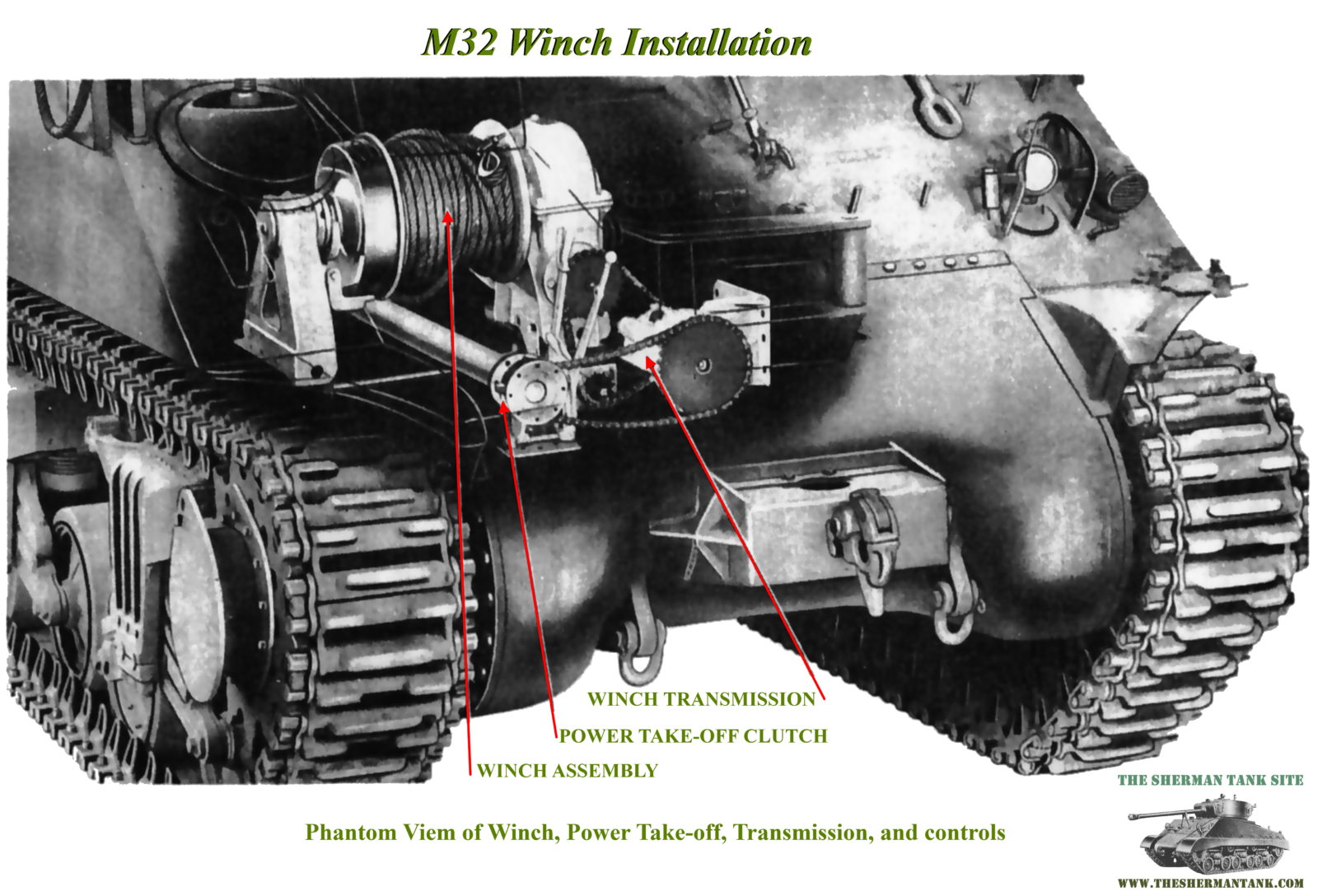
The heart of the M32 is the 60,000-pound Garwood Special 6M 814 winch, mounted in the hull behind the driver. This was a PTO or Power Take OFF winch, driven by the propeller shaft running from the motor to the transmission. They used a shorter shaft, with a pulley and clutch system to drive the winch installed in the gap. This is a proper use of PTO, using it to power a turret drive is a bad use(I’m looking at you Panther and Tiger tanks!). PTO was common in domestic trucks until the 70s, and some trucks had winches mounted on the front bumper driven by shafts from the transfer case or transmission. PTO has largely been replaced by electric or hydraulic drive on most non-commercial vehicles now.
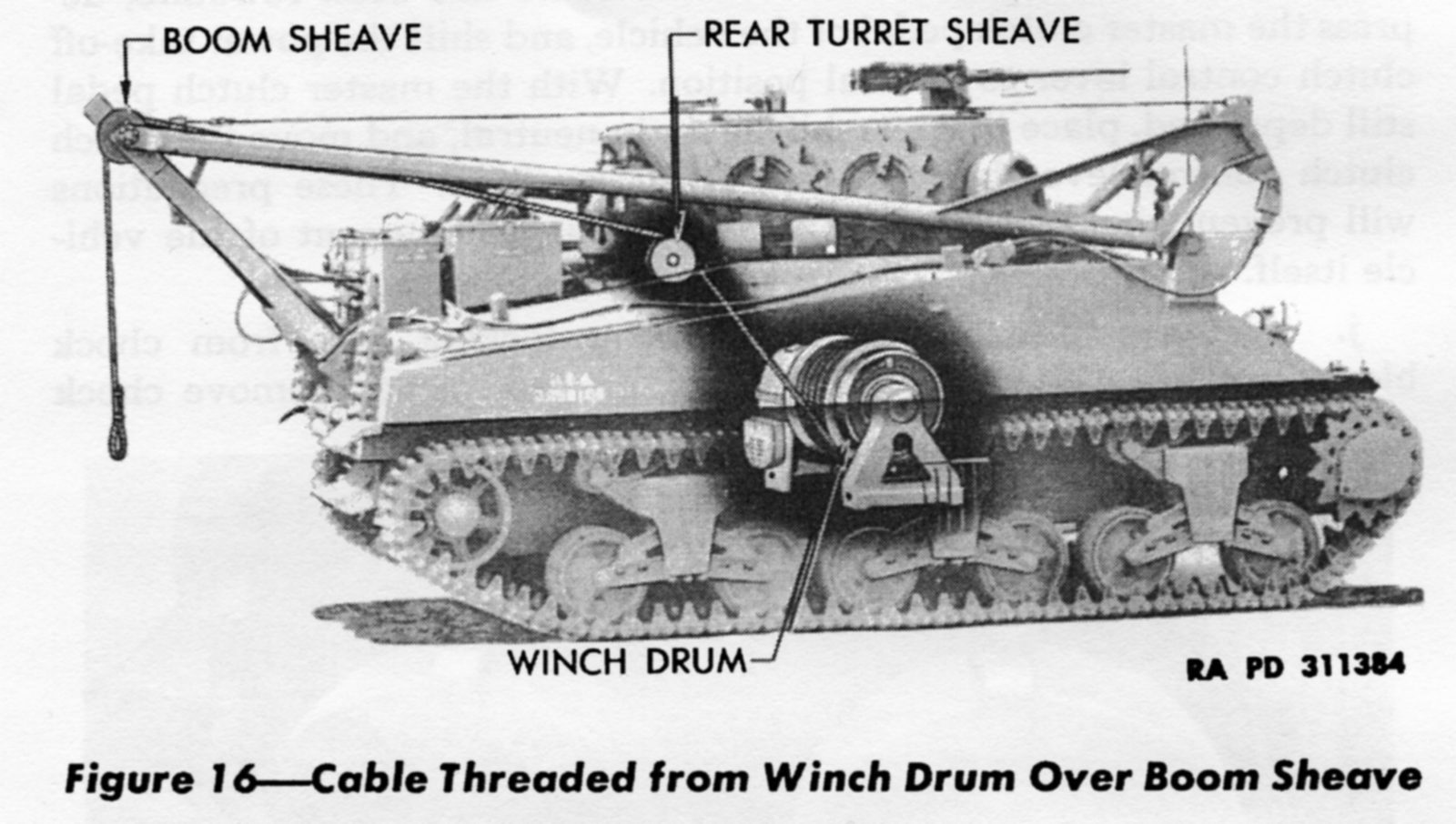
The Power Takeoff Clutch and transmission were Garwood model 7 Y 200 E, and it worked as a brake since it’s attached to the winch drum brake assembly. The 7 Y 200 e, had three speeds, high, low, reverse and neutral. The winch could be used while the M32 was in motion, and was controlled by the driver, the driver would be doing nothing on his own and would need guidance from the rest of the four-man crew to operate the winch safely. The Winch would be far less useful if the M32 didn’t have an 18-foot extendable boom, so the winch could be used to lift things. The boom was also useful for towing when in the lowered position. The lifting boom is raised and lowered using special wire ropes and the lifting drums on the front-drive sprockets. Once the cables were in place the driver slowly pulled the M32 forward, and as the cable wrapped around the lifting drum it pulled the boom up into place. Once in place, there was rigging that needed to be installed before it could be used.
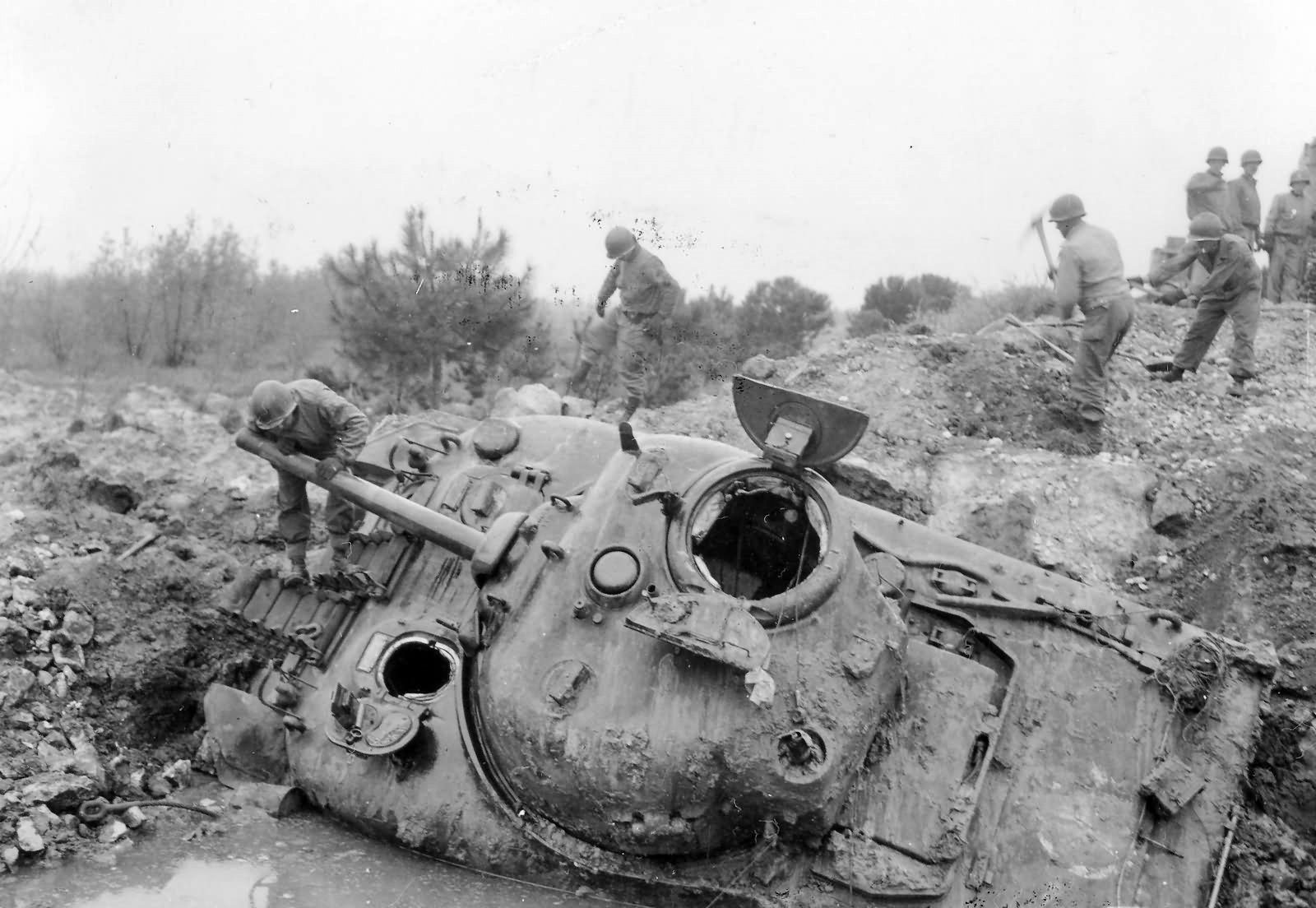
When lifting heavy weights using a boom and winch setup, the vehicle these items are mounted on needs to be stable. If it can bounce around, the load can move around in unpredictable ways, and damage the equipment, or hurt someone. Tank suspension is springy, and not ideal for use with cranes. To solve this problem, the M32 comes with stabilizer plates, that can be bolted, and safety wired in place to lock down the suspension. It also came with very large chocks blocks that lock into the tracks, to keep the vehicle in place and help prevent it from rocking.
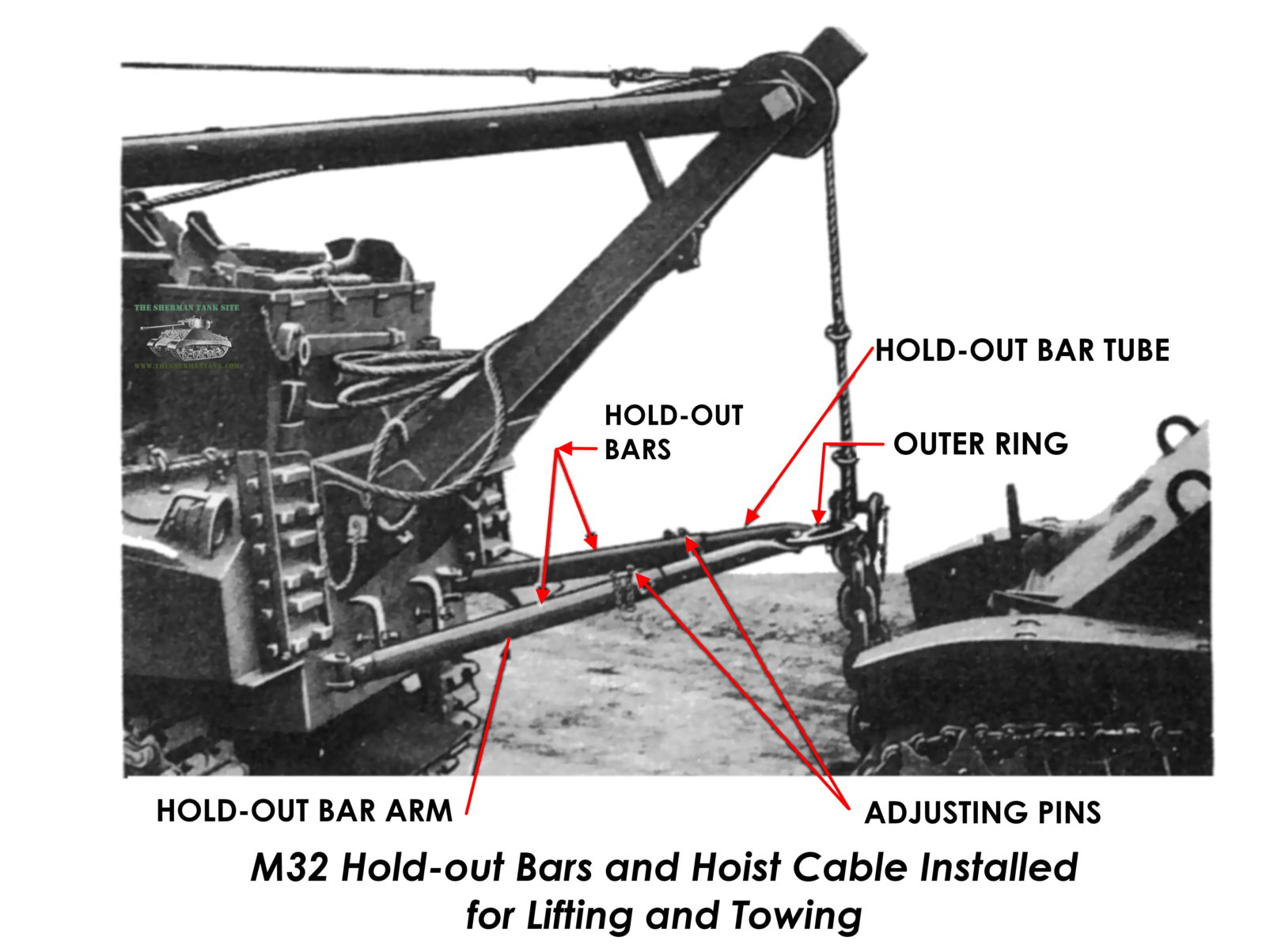
To make optimal use of the winch and boom setup, the vehicle also has two large snatch blocks and a variety of chains and wire ropes. The M32 also comes with tow bars, and telescopic hold-out bars, used in towing. The M32 is also a huge tool and spare parts box, the exterior has road wheels and sprocket teeth mounted to it. In the field, they probably piled spare parts on. One of their more common jobs would be helping repair mine damage to Shermans. They carried a complete set of mechanic tools, and all the specialized tools needed to work on US Tanks and armored vehicles.
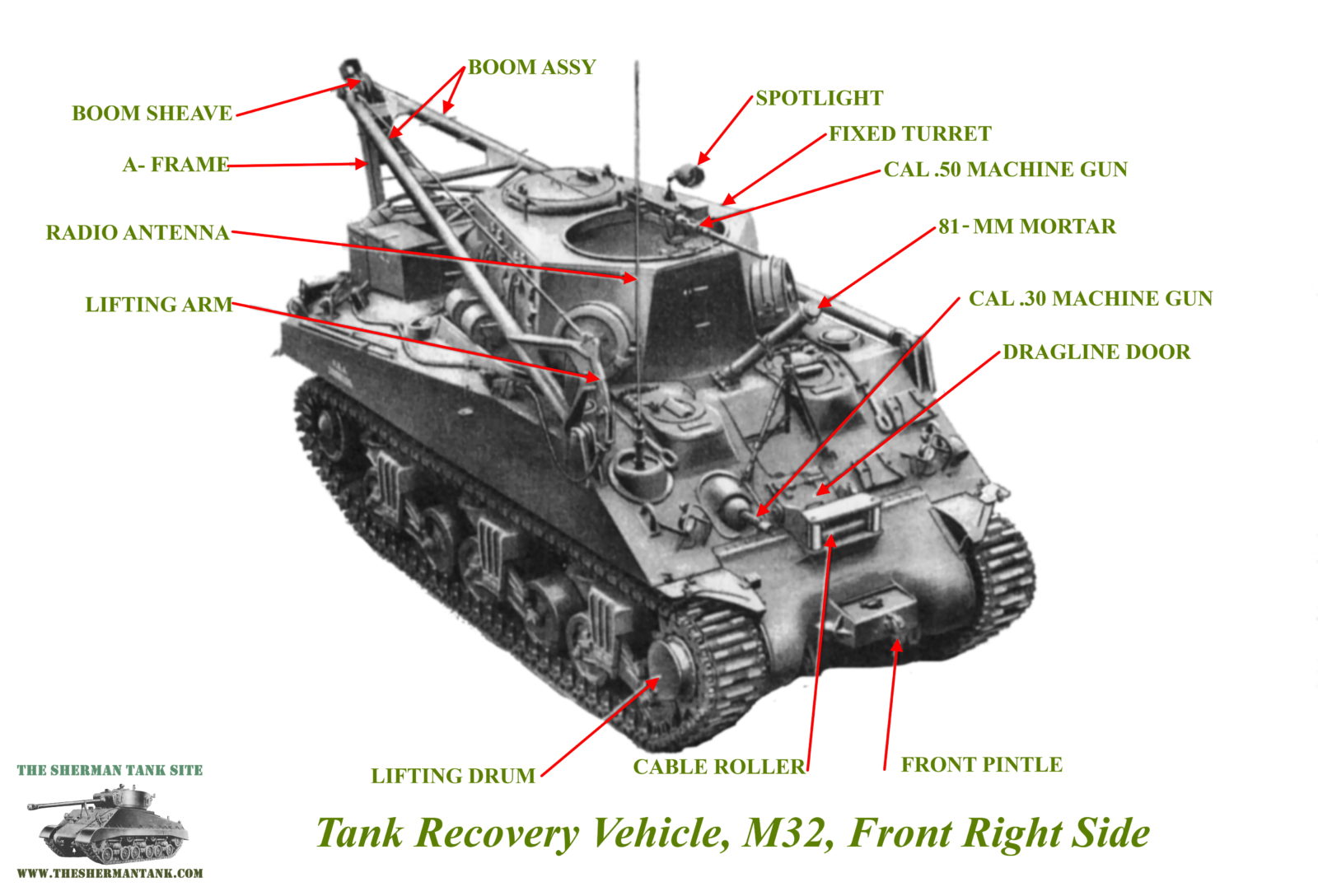
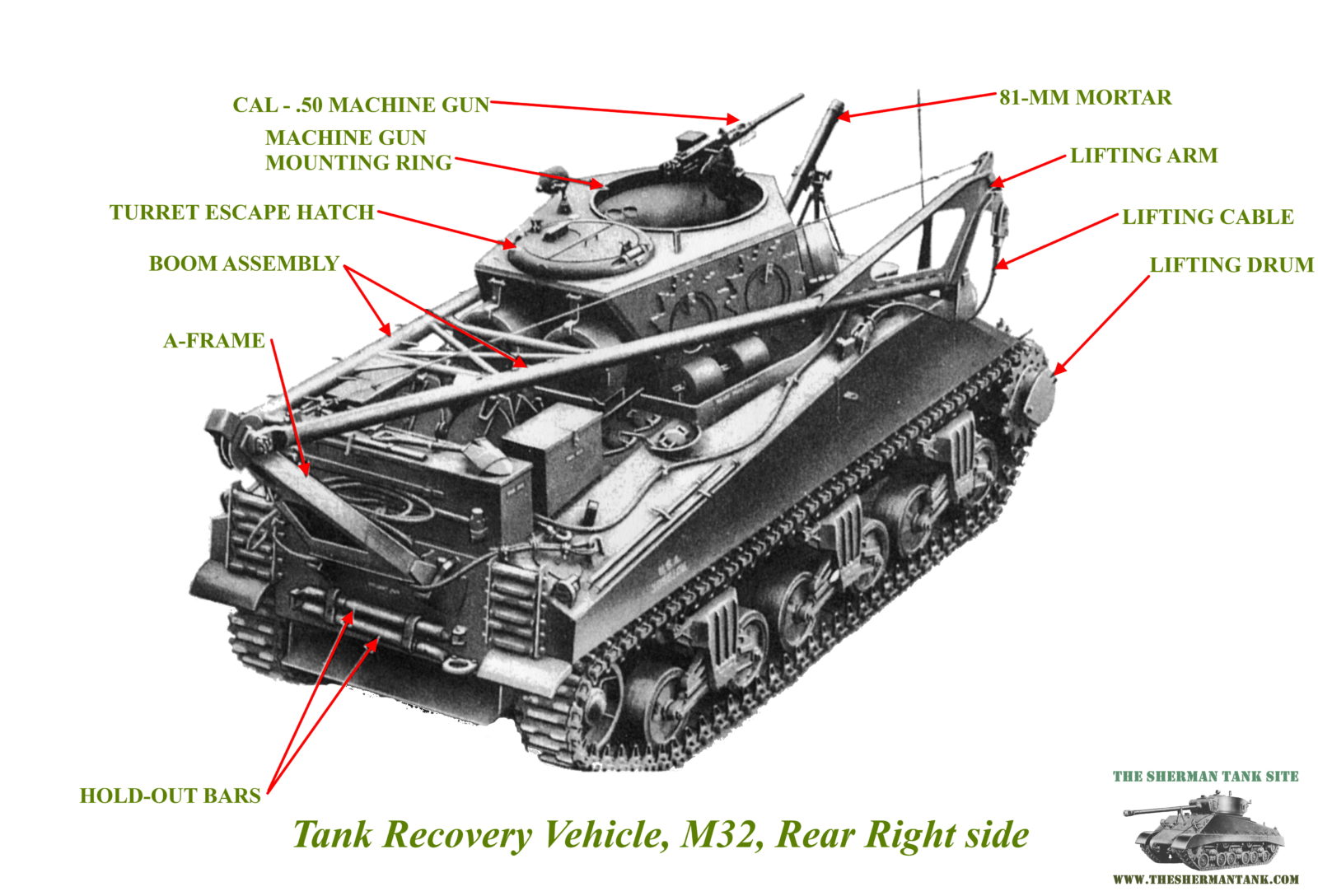
The M32 was armed, heavily armed, but was not a combat vehicle. With an 81-mm mortar, a .50 M2, and an M1919A4 in the bow mount, plus the small arms the crew carried, one submachine gun and pistols, but probably more than that in practice, they do seem heavily armed for a maintenance unit. The main reason for this, is sometimes they are working right up on the front line, at night, often alone. The mortar gives them the option to lay down a bunch of smoke, rush in, hook up the tow cables and bug out. The men operating these vehicles had very little combat training, and no interest in fighting if they could avoid it. In most cases, the mortar was not mounted and ended up being rarely used.
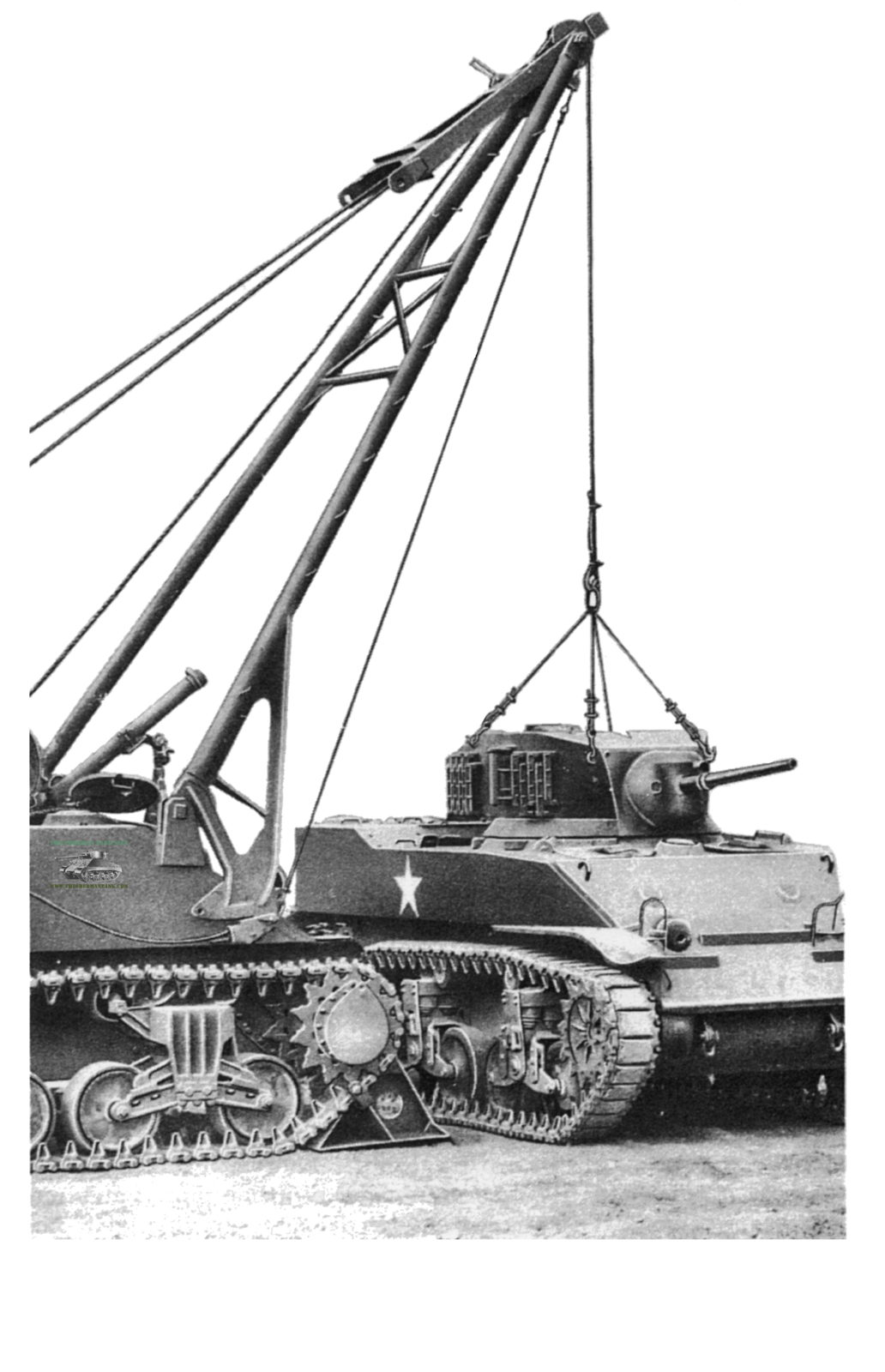
The M32 could be based on any version of the Sherman, with the M32 being based on the M4, the M32B1 on the M4A1 and M32B2 based on the M4A2 and M32B3 based on the M4A3. There was a pilot based on the M4A4 but no production vehicles were made. The vast majority of M32s were M32B1s, the version based on the cast hull M4A1. These vehicles were assigned at the Battalion level to the service company, each getting a pair. Each medium tank company also got an M32 assigned to is HQ platoon.
At the company level, the M32s would spend most of their time working on their own Company tanks. Things like towing in broken-down tanks, putting thrown tracks back on, swapping out a final drive, motor, or repairing mine damaged suspension. In some special cases, the company level M32s might have to team up with other Company vehicles or the Service company vehicles for a difficult recovery. It is also possible the M32s and their crews along would be assigned to the Battalion Service company, if the Battalion commander wanted it that way.
We did ship M32s out as lend Lease equipment, but the most went to the US Army, and at least the British modified some Shermans on their on as Armored Recovery vehicles, but the adaptions were not nearly as capable. The Germans never came up with a production ARV either, until very late in the war when they came up with one based on the Panther hull. It was a lot like the M32, just more poorly designed and produced in every possible way. Ok, Berg Panther or whatever did have better ground pressure… The usefulness of having a reliable, dedicated armored recovery vehicle to get damaged vehicles back to safe areas to fix them is often overlooked, but an important part of keeping a tank unit going.
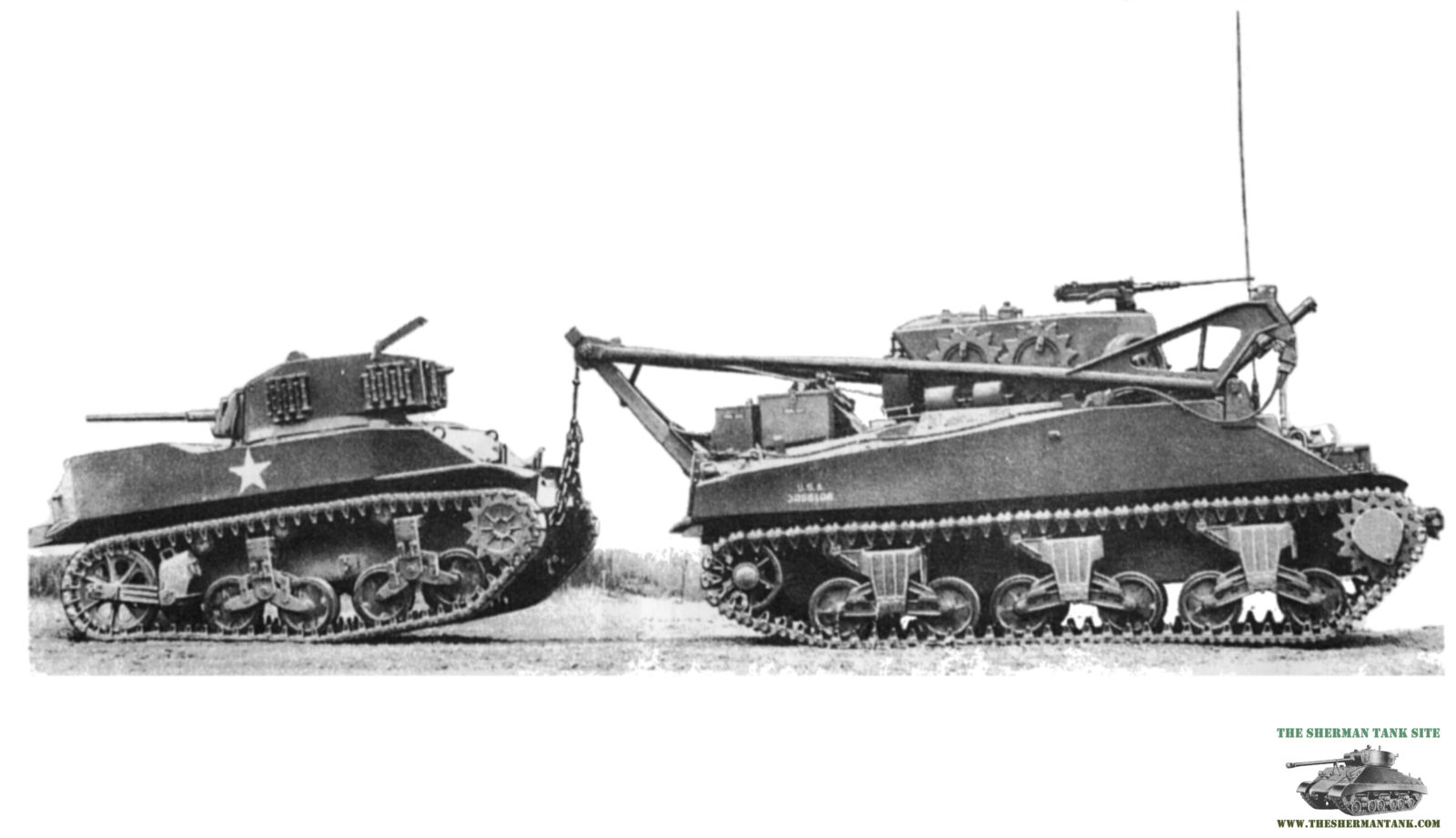
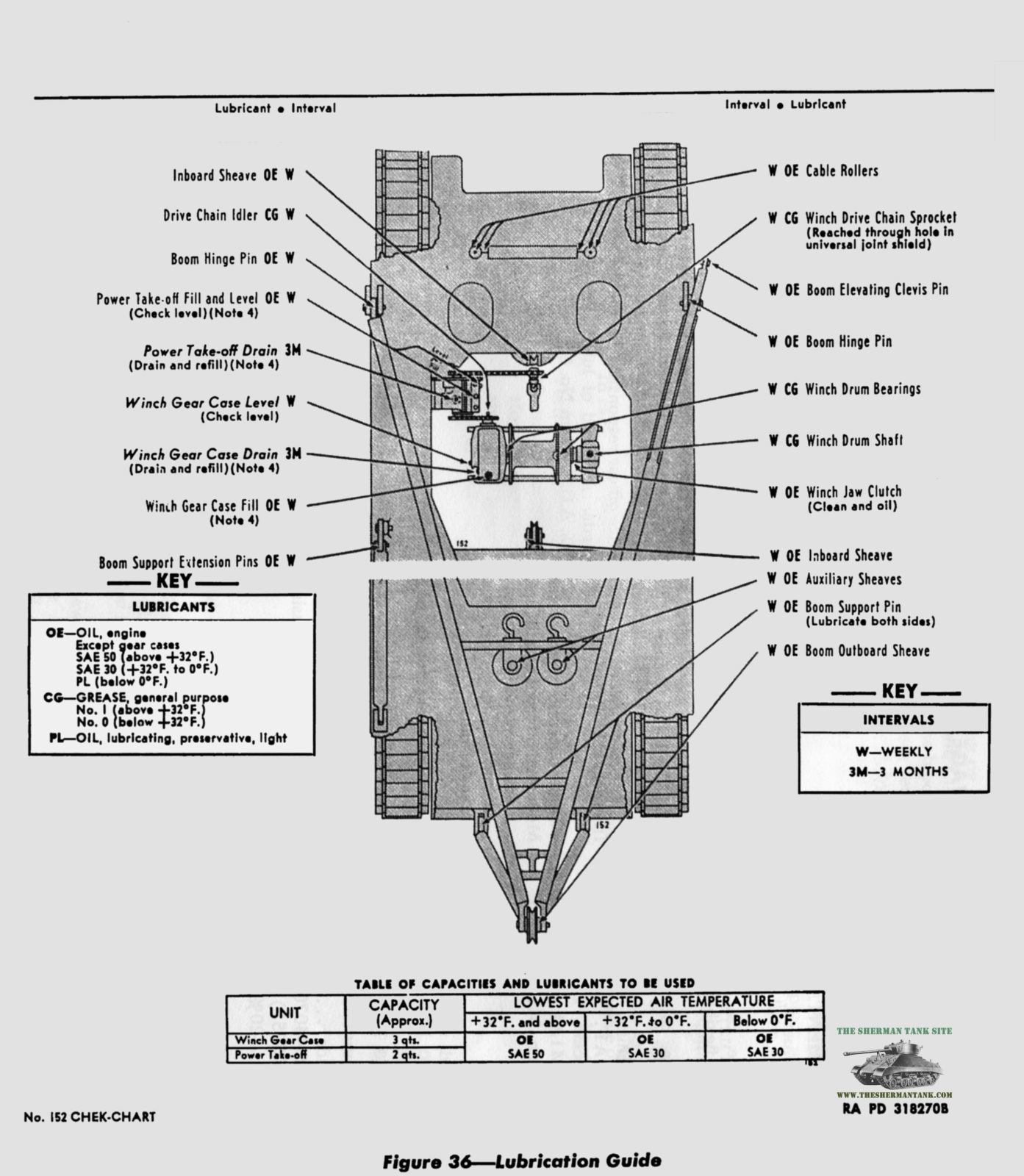
This chart would be used by the crew as a guide to lubricating all the M32 specific parts on the M32, they also had to refer to the manual for the version of the Sherman the M32 was based on, so for the M32 or M32B1, it would be Manual TM9-731A.
Check out the images below, most from World War Photos, for real world shots. You will note some differences between the cleanup up images I have taken from Manuals, and the actual vehicles in the field. The vehicle used for all the manual photos was a pre production vehicle.
For a much more detailed look at the history behind the M32, including who built them, check out the Sherman Minutias great page on the subject.
